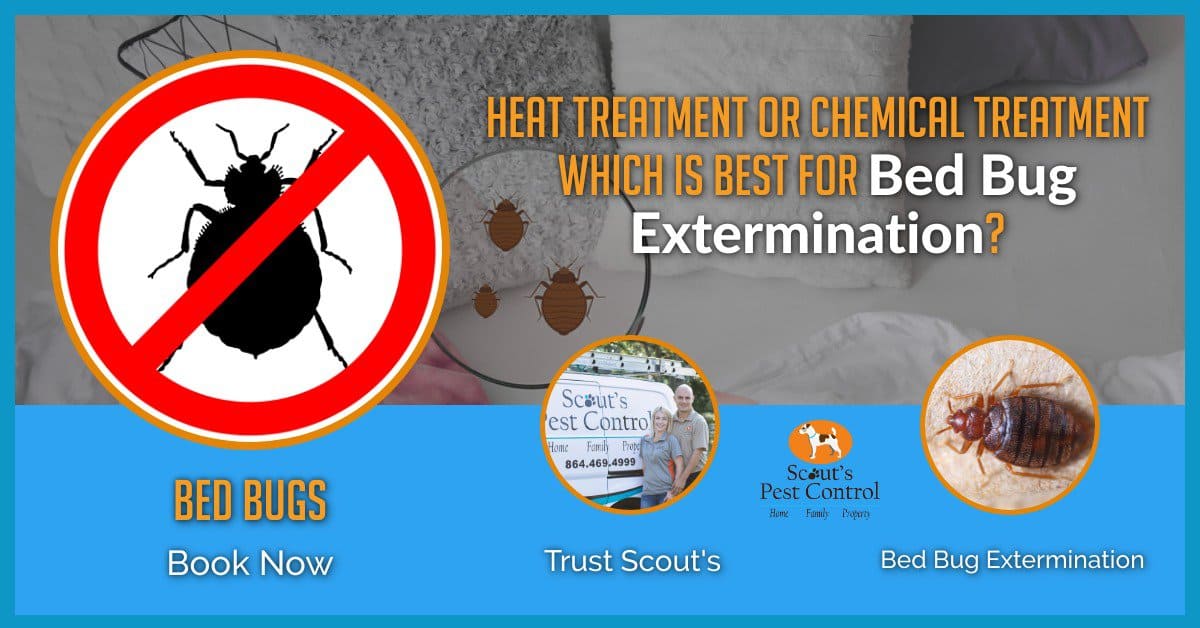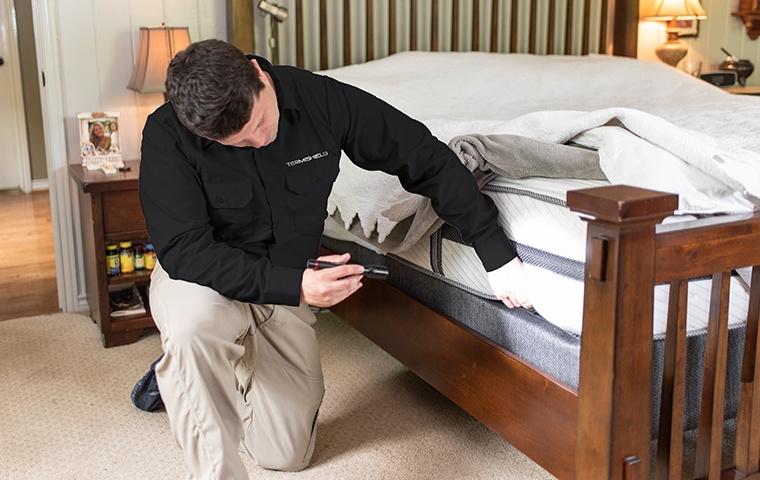Top Kings Cincinnati Bug Control Services: Exterminator Proficiency
Types of Insect Control: Which Method Is Right for Your Infestation?
When encountered with an insect problem, the selection of an ideal method for insect control is crucial in successfully managing the circumstance. By discovering the various types of bug control methods readily available, people can make informed decisions customized to their unique circumstances, ensuring an extra lasting and reliable outcome in parasite eradication.
Chemical Insect Control
Chemical bug control entails making use of synthetic or naturally obtained chemicals to take care of and eradicate pest populations efficiently. This technique is typically used in agriculture, forestry, and property setups to deal with a vast array of pests, including weeds, insects, and rats. Using chemical pesticides can offer quick and targeted services to pest infestations, making it a popular option for lots of people and services.
One of the essential advantages of chemical insect control is its capability to quickly get rid of insects, decreasing the risk of damage to plants, building, and human wellness. By making use of certain chemicals that target specific insects, this method can efficiently control problems while decreasing injury to valuable microorganisms and the atmosphere when applied properly.
Nevertheless, the use of chemical pest control additionally increases issues about possible negative effects on non-target varieties, water resources, and human health. It is crucial to follow safety standards, apply chemicals sensibly, and think about alternative bug control approaches to decrease these dangers and make certain lasting insect monitoring practices.
Biological Bug Control
Biological parasite control, also called biocontrol, makes use of living organisms to take care of and decrease bug populations normally. This method takes advantage of the power of nature to control bugs without the requirement for synthetic chemicals. Biocontrol can include the intro of natural adversaries of the pest types, such as bloodsuckers, virus, or killers, to reduce insect populations. By using the insect's all-natural predators or microorganisms, biological bug control provides a eco-friendly and lasting option to pest management.

Mechanical Parasite Control
Using hands-on and physical methods to manage pest populaces, mechanical pest control supplies an alternate strategy that does not rely upon the usage of living organisms or artificial chemicals. This method includes the use of barriers, catches, or various other devices to literally deter or remove pests. By obstructing pest entry points or setting up traps to capture them, mechanical bug control can effectively reduce invasions without presenting chemicals into the atmosphere.
One usual example of mechanical bug control is the use of mesh displays on doors and windows to stop pests from entering structures. This simple yet efficient technique acts as a physical barrier, maintaining parasites out while enabling appropriate air flow. Additionally, devices like mousetraps, fly swatters, and ultrasonic repellents fall under the mechanical bug control group.
While mechanical bug control approaches can be labor-intensive and require regular tracking and maintenance, they use a eco pleasant and lasting remedy for managing parasite infestations. By combining different mechanical methods, home owners can produce a detailed pest control strategy that minimizes reliance on chemical pesticides.
Physical Pest Control

Some common physical insect control methods consist of the use of barriers such as webs or screens to avoid insect access, traps to record and eliminate parasites, and hand-picking to physically get rid of pests from plants or structures. In addition, techniques like warmth treatments can be utilized to regulate pests like bed insects by elevating the temperature to levels that are dangerous to the insects.
Physical insect control is specifically useful in integrated bug management (IPM) approaches, where multiple insect detailed pest control control techniques are incorporated for effective insect monitoring while minimizing the usage of chemicals. By making use of physical pest control methods, people can properly address bug problems with minimal environmental impact.
Integrated Insect Administration
When carrying out physical parasite control methods as part of insect administration methods, Integrated Parasite Monitoring (IPM) arises as an extensive method that leverages different methods to successfully regulate pest populaces. IPM concentrates on long-lasting avoidance of bugs with a mix of biological, cultural, physical, and chemical tools customized to certain parasite issues. By incorporating numerous control methods, IPM intends to lessen the dangers connected with insects while also decreasing reliance on chemical solutions.
One trick facet of IPM is the focus on surveillance and examining pest populations to identify the most ideal control techniques. This proactive method permits very early intervention and targeted techniques, leading to extra reliable parasite monitoring. Furthermore, IPM promotes eco friendly practices by focusing on non-chemical control techniques and only making use of pesticides as a last resource.
Conclusion

By utilizing the insect's natural predators or virus, organic parasite control uses a sustainable and eco pleasant option to pest administration. - Kings pest control cincinnati oh
Making use of physical and hand-operated methods to take care of bug populaces, mechanical bug control provides an alternative strategy that does not depend on the use of living microorganisms or artificial chemicals.An efficient technique to managing pest populations without depending on chemical or organic methods entails the usage of physical parasite control techniques.When carrying out physical parasite control methods as component of insect management techniques, Integrated Parasite Management (IPM) emerges as a detailed approach that leverages various strategies to successfully control pest populations. Chemical pest control entails the use of pesticides, organic insect control utilizes natural predators, mechanical parasite control entails physical barriers, physical bug control consists of capturing or removing parasites, and incorporated insect monitoring integrates numerous techniques for an alternative approach to pest control.